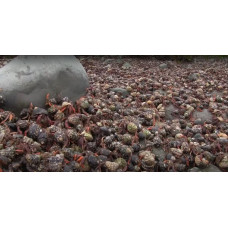Migrations - hereditary fixed mass movements, annually repeated by fish in a certain direction and in a certain season of the year, due to periods of individual development. The following migrations are distinguished: spawning migrations, when sexually mature fish go to breeding grounds; feeding migrations - fish movements to feeding grounds; wintering migrations - fish movements to wintering grounds. Migrations are characteristic of marine, passable, semipassable and some freshwater fish. The nature and extent of movements depend on the peculiarities of the biology of a particular species.
As with various other aspects of fish life, zoologists have developed empirical classifications of fish migrations. In particular, the following types of migrating fish are distinguished:
1)Diadromes (Dr.-Greek δια- - prefix with the meaning of through movement) make migrations from salt water to fresh water and vice versa (Passage fishes).
Three types of diadromes are distinguished:
Anadromes (Dr.-Greek ἀνα- - upward) live in the seas and breed in fresh water. Examples are salmon, striped sea bass, and sea lamprey,
Catadromes (Dr.-Greek κατα- - down) live in fresh water, breeding in the sea. Examples are fish such as eels,
Amphidromes (Dr.-Greek ἀμφι- - both) move between fresh and salt water during their life cycle, but not to reproduce.
2)Potamodromes (Dr.-Greek ποταμός - river) make migrations only in fresh waters.
3) Oceanodromes (Dr.-Greek ὠκεανός - ocean) migrate only in salt water.
Although these classifications were created for fish, they are, applicable to any aquatic organism.
Migrations
Tags: migrations

